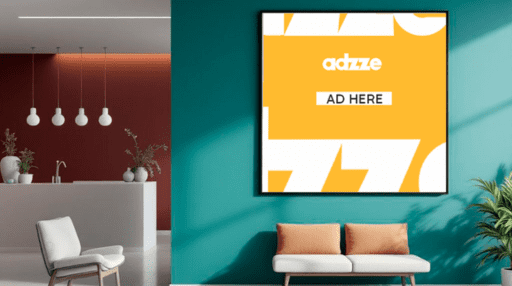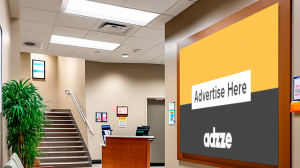In today’s fast-paced advertising world, healthcare brands must find innovative ways to connect with consumers. Doctor’s office ads offer a unique opportunity to engage patients in an environment where health-related messaging is most relevant. With long dwell times and a captive audience, these spaces provide an ideal platform for targeted healthcare advertising. Yet, many brands overlook this highly effective marketing channel.
The Power of Captive Audience Marketing in Healthcare
Doctor’s offices naturally create an environment where patients are receptive to health-related information. Whether waiting for an appointment or picking up a prescription, individuals are already in a mindset that aligns with healthcare messaging. This makes advertising in medical offices a strategic move for pharmaceutical companies, health insurance providers, and wellness brands.
Key Benefits of Doctor’s Office Advertising:
Extended Dwell Time – Patients spend an average of 20–30 minutes in waiting rooms, providing ample exposure to ads.
High Relevance – Viewers are in a healthcare setting, making medical and wellness-related ads more impactful.
Trust and Credibility – Messaging in a doctor’s office is perceived as more authoritative than traditional ads.
Best Doctor’s Office Ad Placements
To maximize impact, healthcare brands should strategically position ads in areas where patients are most engaged. Here are some of the best placements:
1. Posters & Digital Screens – Waiting Room Engagement
Waiting rooms are prime real estate for advertising, as patients spend significant time here before seeing a doctor. Posters and digital screens can educate patients about new treatments, insurance options, or wellness programs.
Advantages:
Continuous visibility while patients wait.
Ability to showcase dynamic content through video ads.
Engages not just patients but also caregivers and family members.
2. Pharmacy Bags & Prescription Pads – Reinforcing Messaging Post-Visit
Printed ads on pharmacy bags and prescription pads serve as tangible reminders of a brand’s message, making them highly effective at reinforcing key healthcare promotions.
Advantages:
Reaches patients at a critical moment—when they receive their medication.
Provides a direct link between treatment and advertised products or services.
Ensures repeated exposure as patients handle their prescriptions.
3. Sanitizing Stations – Interactive Ad Placements
Hand sanitizer dispensers are widely used in medical offices, creating a high-touchpoint advertising space. Placing branding on these stations can capture patient attention in a subtle yet effective way.
Advantages:
Frequent interaction ensures strong brand recall.
Positive brand association with hygiene and wellness.
Ideal for healthcare, pharmaceutical, and wellness brands.
How Brands Can Effectively Target Healthcare Consumers
Reaching the right audience in a doctor’s office requires a strategic approach. Here’s how brands can optimize their advertising efforts:
1. Use Data-Driven Targeting
Leverage patient demographics and health trends to tailor ad messaging. For example, an ad in a pediatrician’s office should differ from one placed in a cardiologist’s clinic.
2. Focus on Education and Value
Patients are looking for trusted healthcare information. Ads should provide valuable insights, such as wellness tips, treatment options, or financial assistance programs.
3. Keep Messaging Simple and Direct
Patients may not have the time or patience for complex messaging. Clear, concise, and visually engaging ads work best in medical settings.
Case Study: A Successful Campaign Using Doctor’s Office Ads
A major pharmaceutical company successfully leveraged doctor’s office ads to promote a new allergy medication. By placing digital ads in allergists’ waiting rooms and printed information on prescription bags, the company achieved the following:
25% increase in patient inquiries about the medication.
Higher brand trust and recognition among allergy sufferers.
Increased prescription requests due to direct exposure at the point of care.








